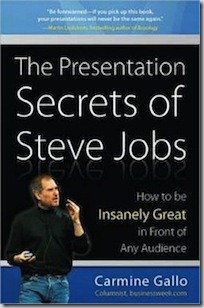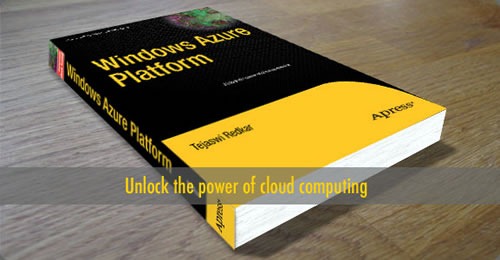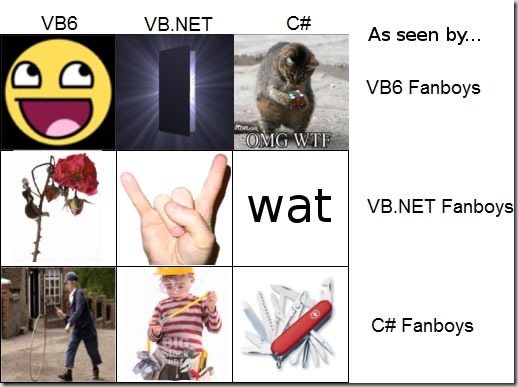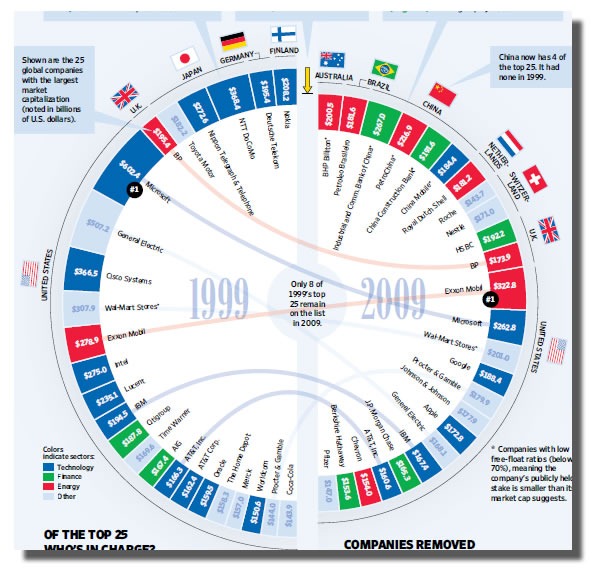
“You can’t improve what you don’t measure” is a maxim for many fields. Engineers, businesspeople and athletes may all have their own way of phrasing it, but however it’s put, they repeat it to each other all the time.
The act of measurement becomes murkier when applied to creative endeavours such as blogging. The qualitative stuff – How many people read the blog? Which articles were the big ones? Is the readership trend going up or down? – is pretty easy. A little StatCounter code embedded in the pages of The Adventures of Accordion Guy in the 21st Century and Global Nerdy does the tedious stuff; I just look at the data and interpret it. As for the qualitative stuff, I’ll leave that as an exercise for the individual reader.
Accordion Guy’s Stats for 2009
Once again, The Adventures of Accordion Guy in the 21st Century passed the “2 million pageviews” mark. As of this writing, here’s how the numbers break down:
- 2,198,906 pageviews – that is, the number of web pages from the Accordion Guy blog that were downloaded. Every time you www.joeydevilla.com, one of the individual article pages or hit the “refresh” button on your browser while reading my blog, it registers as a pageview.
- 105,599 returning visitors – when you visit Accordion Guy, the StatCounter code embedded on every page attempts to leave a “cookie” – a tiny scrap of data stored by your browser – for anonymized tracking. If the StatCounter code sees that your browser has already stored an Accordion Guy cookie, it means you’ve visited the site before. The cookie data includes the date and time of your last visit, and if it’s been more than an hour since you last visited the Accordion Guy blog, you’re counted as a “returning visitor”.
- 1,672,393 first-time visitors – the opposite of a returning visitor is a “first-time visitor”. If the embedded StatCounter code can’t see an Accordion Guy cookie stored by your browser, you’re counted as one of these.
- 1,777,992 unique visitors – this is a calculated value: “unique visitors” is simply the sum of returning and first-time visitors.
Here’s an incredibly compressed chart showing the day-to-day activity on the Accordion Guy blog:
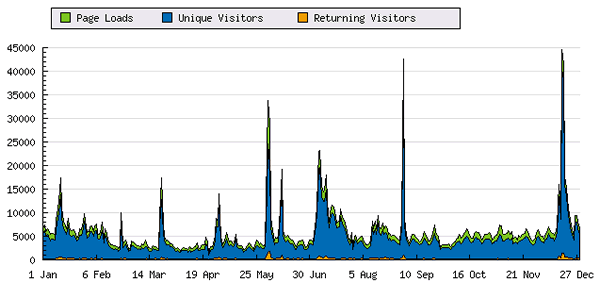
The spikes in the graph represent the most popular articles. The rightmost spike, which also happens to be the tallest, represents the How Fanboys See Operating Systems article from December 16th. That one got featured on Reddit and re-tweeted like crazy.
Here’s how the numbers look for each quarter:
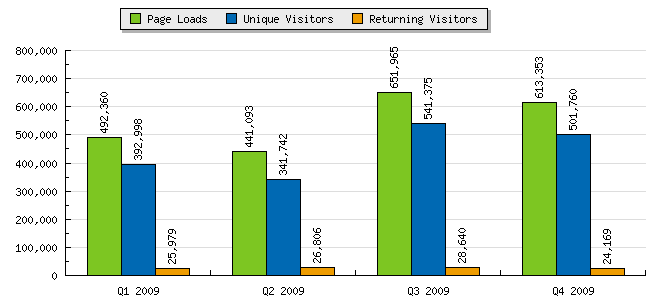
The trend is up-slightly down-up-slightly down, but still rising overall.
Global Nerdy’s Stats for 2009
Accordion Guy is my “hobby” blog. It’s the forum in which I express myself, tell stories and jokes, share pictures I’ve taken and point to interesting things I’ve found on the ‘net. I write it “just for kicks”, and the moment I stop enjoying writing it, I’ll stop.
Global Nerdy is a different beast. It is my second personal blog devoted to programming, internet technology and the nerd lifestyle, my first being The Happiest Geek on Earth (which Cory Doctorow called me in this Boing Boing article, which points to The Accidental Go-Go Dancer, in which I chronicled my brief stint as an accordion-playing go-go dancer at a downtown Toronto nightclub). Global Nerdy is both: T
- An exercise to make me a better programmer and tech advocate through writing about the field, and doing the necessary legwork and research to support that writing, as well as
- Self-promotion. Yes, it’s also a mercenary playing-to-win, look-at-me, hire-me, separate-myself-from-the-crowd, I-am-ten-Scobles blog.
I can say with certainty that Global Nerdy has helped me land my last three jobs, which includes my current one as a Developer Evangelist with Microsoft Canada – a job I landed in the middle of the econopocalypse of 2008 after getting laid off. In spite of all the job market doom and gloom, I was unemployed a mere three weeks.
This year, Global Nerdy crossed the “1 million pageviews” mark for the first time. Here’s how the numbers break down (for an explanation of the terms, see the Accordion Guy review above):
- 1,608,638 pageviews
- 60,340 returning visitors
- 1,263,873 first-time visitors
- 1,324,213 unique visitors
Here’s the chart showing the day-to-day activity on Global Nerdy:
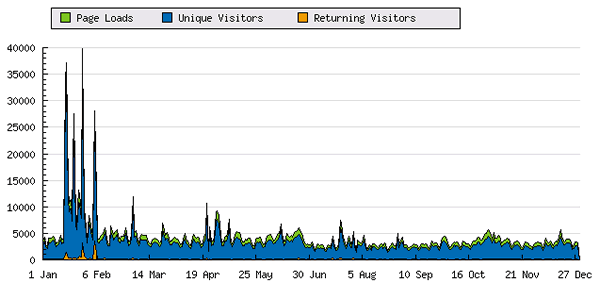
The spikiest period is in late January, which represents the buzz around the Winning the Gnu article, in which I won Richard Stallman’s auction for a plush version of the Free Software Foundation’s mascot, the gnu.
Here’s how the quarterly numbers break down:
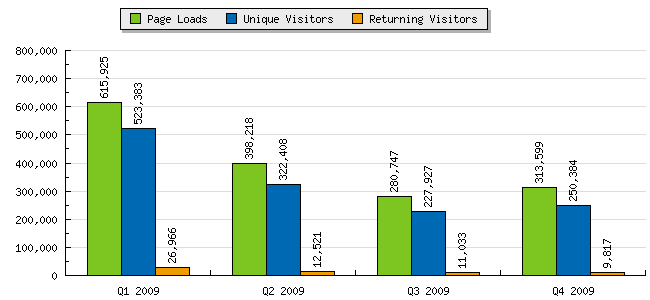
Eek – a downward trend!
If viewed in isolation, this would be a worrying development. However, there’s another blog that’s been getting the readers that would normally go to Global Nerdy, and I’ve included a screenshot of that blog below:
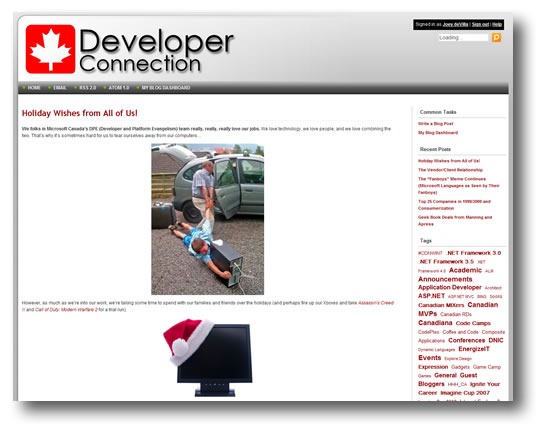
Canadian Developer Connection is Microsoft Canada’s developer blog, and it literally pays the rent. As a Developer Evangelist for Microsoft, I’m paid to write it, and my performance – and yes, my bonus — is judged on the number of articles I write for it and the impact those articles have.
Furthermore, I’m trying to be Microsoft Canada’s most prolific, most-read and most influential blogger. After that, I’m aiming for Microsoft worldwide. I think my closest competition is my friend, and coworker (and guy who recommended me for the job), David Crow. Here’s how we stack up, blog-wise, according to Alexa:
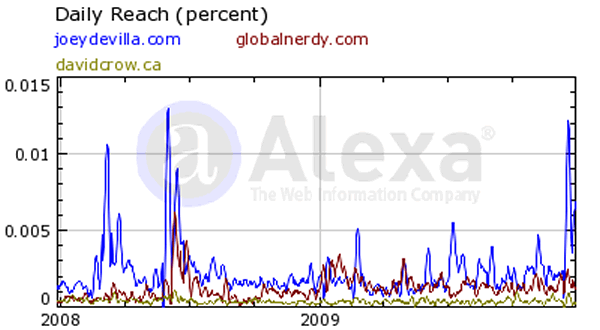
In your face, Drinky Crow!
(I’ll admit, he’s got an edge on me in Twitter followers – I have 4,498, he has 4,719 – and we each have our own spheres of influence. And hey, he’s the man behind DemoCamp – I just help out.)
As a result, I’ve been doing two things:
- I’ve been writing Global Nerdy articles and cross-posting them to Canadian Developer Connection.
- I use Twitter to promote those articles, but I link to the Canadian Developer Connection one first, and the Global Nerdy one second.
I still think of Global Nerdy as my primary tech blog; I’m just nice (and pragmatic) enough to share my material with Microsoft. Should the day come when Microsoft and I part ways – I can’t see such a day on the horizon, but the era of the lifelong “company man” has passed – I’ll still have it. There’s also the fact that sometimes, there’s stuff I’ll post here that I won’t post in Canadian Developer Connection, such as when I’m speaking for myself and not on behalf of Microsoft Corporation.
The Blogs Over the Years
Accordion Guy is a long-running blog – not the longest-running by a long shot, but pretty long-lived, having had its start in November 2001. I’ve been measuring it with StatCounter since 2005, and here’s how it’s been doing since then:
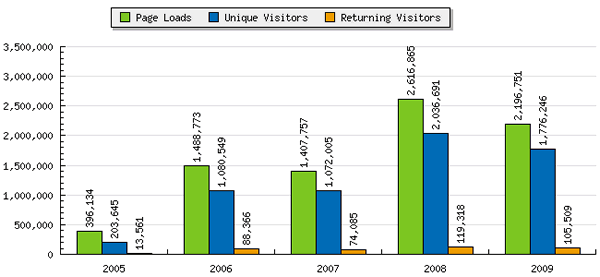
There was a slight dip from the 2008 to 2009 numbers, and the cure is simple: write more, write better.
Global Nerdy is a newer blog – my friend George Scriban and I started it as a career-booster in mid-2006. George no longer writes for Global Nerdy, what with his being very busy with stuff at Microsoft’s main HQ in Redmond, and my job is a little more in-your-face than his. Global Nerdy’s maintained an upward trend, with an big shot in the arm from my joining Microsoft in late 2008:
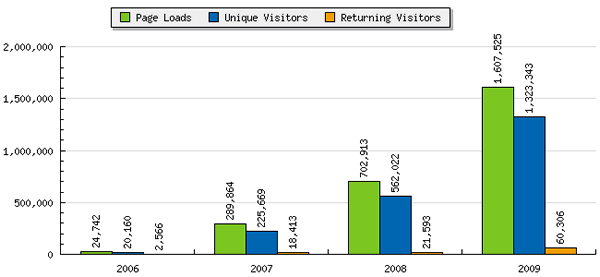
Again, the mantra for Global Nerdy in 2010 is simple: write more, write better!
To of you who read either of my blogs – thanks for the great year, and expect great things in the new decade!
This article also appears in The Adventures of Accordion Guy in the 21st Century.
